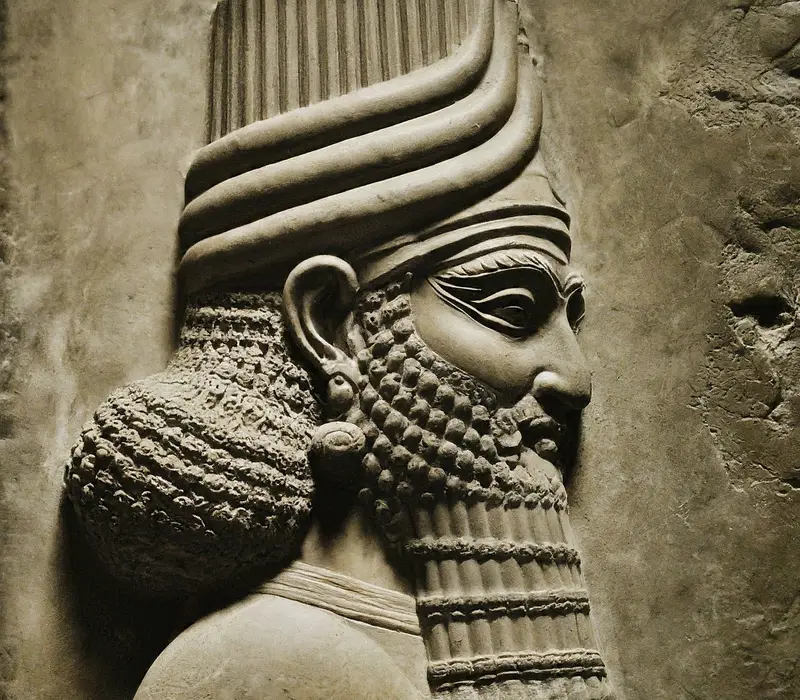Title: Shalmaneser III: The Brave and Wise King Who Loved Animals and Expanded the Assyrian Empire

Shalmaneser III, one of the most significant Assyrian kings, reigned during a time of military expansion and administrative reform. His era was marked by his courage, wisdom, and a notable love for animals and hunting. Shalmaneser inherited the throne from his father, Ashurnasirpal II, who left him a powerful army and an extensive empire. the life and reign of Shalmaneser III, his military campaigns, his love for animals, his administrative reforms, and his legacy, which is preserved in ancient records like the famous Black Obelisk.
Early Life and Inheritance
Shalmaneser III was born into a royal Assyrian family as the son of Ashurnasirpal II, a king known for his conquests and the expansion of the Assyrian Empire. Upon his father’s death in 859 BCE, Shalmaneser inherited not only the throne but also a massive army. His father had established a solid foundation for him, building an army feared across the ancient world. This inheritance enabled Shalmaneser to maintain the strength and reach of the empire while launching military campaigns that would shape his legacy as one of the most powerful Assyrian rulers.
Shalmaneser also took after his father in another significant way. Like Ashurnasirpal II, he kept detailed records of his achievements, known as the Annals, which were written on clay tablets and distributed to the various regions under Assyrian rule. These annals document Shalmaneser’s military exploits, visits to different cities, and achievements during his reign. They also provide a rare glimpse into the appearance of Arab and Chaldean peoples in recorded history, marking an important moment in ancient historiography.
Military Campaigns and the Expansion of the Assyrian Empire
Shalmaneser III's reign is best remembered for his relentless military campaigns, which extended the boundaries of the Assyrian Empire further than ever before. Soon after ascending to the throne, Shalmaneser began a series of military campaigns to assert his dominance over neighboring territories. His first major campaign was directed against King Aramu of Urartu, a powerful kingdom located to the north of Assyria. Shalmaneser successfully subdued Aramu's capital, known then as Arzashkun, marking the beginning of a series of military victories.
Shalmaneser's military strategy involved launching annual campaigns, sometimes even multiple campaigns in a single year. In total, he is believed to have led 35 military campaigns during his reign, many of which took place in northern Syria. The Euphrates River formed the western border of the Assyrian Empire at the time, and this region was particularly important for Shalmaneser, as it provided access to the Mediterranean, which was rich in trade and resources, much like the oil-rich regions of today.
One of the most significant events during Shalmaneser’s reign occurred in 853 BCE, when he faced a formidable coalition of 11 kings in the Battle of Qarqar. This alliance, led by King Hadadezer of Damascus and King Ahab of Israel, presented one of the most serious challenges to Assyrian dominance. Although the battle ended inconclusively, Shalmaneser’s ability to hold his ground against such a powerful coalition was a testament to his military prowess and the strength of the Assyrian army.
The Black Obelisk and the First Mention of Arabs
Among the most important archaeological artifacts from Shalmaneser's reign is the Black Obelisk, a black limestone monument that details the king’s military victories and the tributes he received from subjugated peoples. The obelisk is particularly significant because it contains one of the earliest known references to Arabs. It also features a depiction of King Jehu of Israel bowing before Shalmaneser, symbolizing the Assyrian dominance over the region.
The Black Obelisk is housed in the British Museum today and remains a key artifact for understanding the relationships between the various kingdoms of the Near East during Shalmaneser’s reign. This obelisk also immortalizes Shalmaneser’s title as "King of the Four Corners of the Earth" or "King of All Peoples," signifying his vast empire and control over multiple regions and ethnic groups.
Reforms and Construction Projects
In addition to his military achievements, Shalmaneser III undertook significant reforms and construction projects, particularly in the heart of Assyria. Shortly after ascending to the throne, he made Nimrud and Nineveh his capitals, from which he administered the empire. He also strengthened the walls of major cities, including Ashur, the religious capital of the empire, and built numerous temples and palaces.
Shalmaneser’s reign saw the construction of many important buildings, including temples dedicated to the gods Ashur and Ishtar. These structures were not only places of worship but also served as political symbols, demonstrating the king’s piety and his role as the protector of Assyria’s religious and cultural heritage.
The Mysterious End of Shalmaneser’s Reign
Despite his numerous accomplishments, Shalmaneser III's reign ended in turmoil. In 826 BCE, after more than 30 years of rule, a rebellion broke out within the empire, led by his own son, Ashur-danin-pal. This civil war, which spread throughout Assyria, significantly weakened the empire and set the stage for future struggles. After two years of conflict, Shalmaneser III died under mysterious circumstances in 824 BCE.
His death marked the end of an era, and his son Shamshi-Adad V succeeded him. Although Shamshi-Adad eventually restored order to the empire, the rebellion left lasting scars on Assyrian society and foreshadowed the eventual decline of the empire.
The Oldest Recorded Handshake in History
One of the most intriguing depictions of Shalmaneser III comes from a relief showing him in the midst of a diplomatic moment with the Babylonian king, Marduk-zakir-shumi I. In this relief, the two kings are shown shaking hands, symbolizing peace and cooperation between Assyria and Babylon, two kingdoms that were often at odds. This handshake is considered the oldest recorded handshake in history and reflects Shalmaneser’s diplomatic skills in addition to his military prowess.